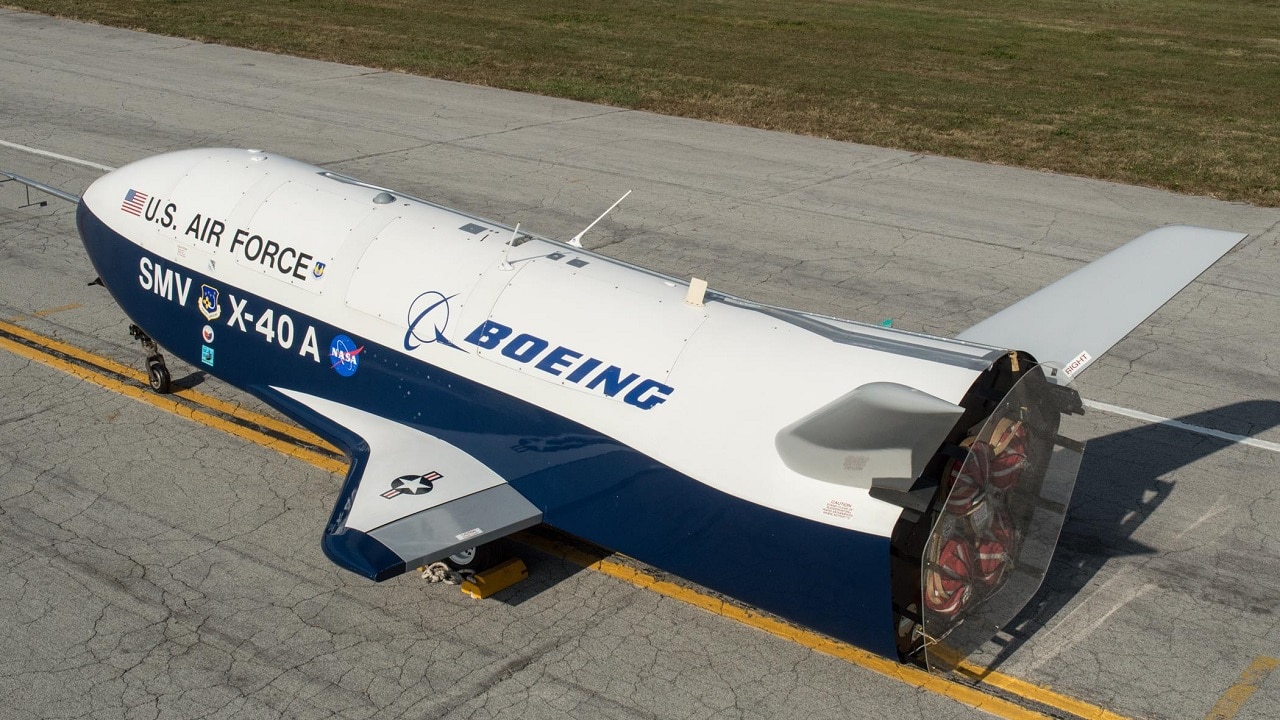The X-40A Might not be super well-known today but it paved the way for the X-37B: After the space shuttle retired, it looked like it was the end of the line for vertically-launched and horizontally-landed reusable spacecraft. But the United States actually has an unmanned “mini-space shuttle” called the X-37B that can orbit the earth for up to 780 days. What was the precursor to that spaceplane? The X-40A provided the impetus for guidance and control during autonomous flight and gliding landings. This allowed the Americans to gain insight and flight experience to optimize the craft that would become the X-37B.
What Was the X-40A’s Mission?
The unmanned X-40A space maneuver vehicle was 80 to 90 percent the size of the X-37B. The craft was tiny – only 22-feet long and 2,600 pounds. It was dropped from a Chinook helicopter at 15,000 feet and then started its descent to land horizontally at Edwards Air Force Base. The X-40A had no engines – it was an aircraft created to study how the software and other internal systems would react to a 75-second free-flight descent and landing.
The craft was built at Boeing’s Phantom Works at Seal Beach, California is known for “black projects” and experimental aircraft. The first flight was in 1998 at Holloman Air Force Base in New Mexico. The X-40A, made of graphite-epoxy and aluminum, had to learn to land with wind gusts and make sure it didn’t do a face plant on touchdown. It conducted seven other landings under the guidance of NASA starting in 2001.
What Was the X-40A Used For?
The idea behind the X-40A program was to help the United States someday create a spacecraft (the X-37B) that could send out satellites and perform surveillance and logistic duties. The X-40A cost around $1 million to build and the program had $5 million invested in it.
The Difficulty with Reusable Space Planes
The difficult part of a reusable space plane is the size of the cargo payload. It is desirable to cut launch costs so, for example, NASA could spend just $1,000 per pound of cargo instead of $10,000 per pound of cargo. Both the X-40A and X-37B are small crafts. The X-40A had a small payload bay and did not have a capture arm like the Space Shuttle – so that reduced its capabilities.
Also, the X-40A, having only a limited glide mission, could not prepare engineers for what would await the X-37B in space. Would it be cost-effective? Could it be turned around quickly for new flights without having to replace tiles? How flexible and responsive was the X-37B going to be?
All of these questions would come from lessons learned flying the X-37B, but the X-40A had an important role in developing a testbed for gliding and free-falling to land horizontally – the main aspect of having a reusable spaceplane.
You can see the X-40A now at the National Museum of the United States Air Force at Wright-Patterson Air Force Base.
Now serving as 1945’s Defense and National Security Editor, Brent M. Eastwood, PhD, is the author of Humans, Machines, and Data: Future Trends in Warfare. He is an Emerging Threats expert and former U.S. Army Infantry office.

